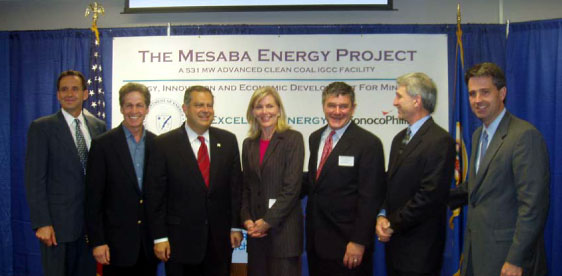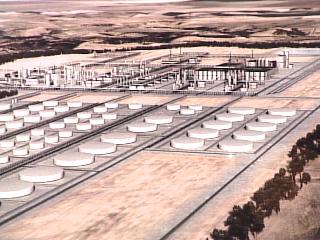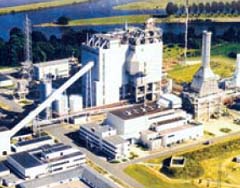From NISLAPP – Green Electricity or Green Money?
November 4th, 2014
Released yesterday by National Institute for Science, Law, and Public Policy (NISLAPP) (never heard of it before, need to do some checking):
Green Electricity or Green Money?
Why is this a question? We know it’s a problem. But this report focuses on things like “Smart Meters” and doesn’t dig into the the even worse toadying for coal gasification and other harebrained promotional schemes of these orgs.
Here in Minnesota, the money goes to Minnesota Center for Environmental Advocacy, Fresh Energy f/k/a ME3, Izaak Walton League and its former program now independent 501(c)(3) Wind on the Wires (conveniently separate since just after election, when Bill Grant was appointed Deputy Commissioner of Commerce in charge of all things energy)(oh, and Nancy Lange appointed to Public Utilities Commission). And then there’s RE-AMP. There’s so much money flying around for promotion of transmission and coal gasification.
Bill Clinton toadying for transmission
WOW’s devil we know… ummm… WOW!!!
Walton’s Bill Grant – Deputy Commissioner of Energy?
Wind up to ELPC Transmission Strategy Meeting
AAAAAAAAAAAAARGH… back to work…
Another cut to Excelsior Energy
March 12th, 2013
Dying the death of a thousand cuts, here’s one more paper cut for our good friends at Excelsior Energy.
Excelsior Energy’s Mesaba Project, the creme-de-la-creme of vaporware projects, was slashed again by a Midwest Independent System Operator filing with FERC that the project had breached its transmission interconnection agreement and was in default. MISO has asked FERC to terminate the agreement:
The state has been unreasonably and inexplicably reluctant to kill this non-project. Maybe the feds are willing?
Hyperion Refinery one step closer to GONE!
October 2nd, 2012
The Hyperion project, an 800 pound gorilla, an oil refinery PLUS a coal gasification (IGCC) plant (it morphed quite a bit over the years), proposed for agricultural land west of Sioux Falls, South Dakota, has been looming for a long time, but there’s evidence that the stakes through it’s slimy heart are having an impact.
In the Argus Leader:
Hyperion declines to renew options with Union County landowners
The stake in Hyperion’s slimy heart is that there’s no money:
There’s no money to build Hyperion, no investors, another vaperware project sounding a lot like the AWA Goodhue wind project here in Goodhue Count, or Excelsior Energy’s Mesaba Project, coal gasification on the Iron Range. It’s the lack of money that’s the real news:
Industry analysts question Hyperion
“Nobody would finance it,” he told Platts. “It would take forever to build.”
Rough road
Building pipeline
Mesaba Project at the PUC on August 14th
August 5th, 2012
Excelsior Energy’s Mesaba Project, the coal gasification plant that will not die, is returning to the Minnesota Public Utilities Commission on August 14, 2012.
At that time, they’ll address whether the original project’s permits apply to this project, and whether this one, under Minn. Stat. 216B. 1694, requires additional environmental review:
**6. E6472/GS-06-668 Excelsior Energy, Inc.
In the Matter of the Joint LEPGP Site Permit, HVTL Route Permit and Pipeline (Partial
Exemption) Route Permit Application for the Mesaba Energy Project in Itasca County.
Should the Commission find, pursuant to Minnesota Statutes 216B. 1694 subdivision 3, that the
site and route permits issued on March 12, 2010 for the Mesaba Energy Project are deemed valid
for a natural gas fired plant located at the same site and that no additional environmental review
is required under applicable state rules?
This docket has been one of the longest strangest trips ever, a coal gasification plant that wasn’t needed yet fed by state and federal money, using CO2 capture and storage that does not, can not, and will not exist. Here’s some history:
Health Benefits of Coal (ya gotta read this one, HILARIOUS!)
Mesaba – Extend the Hearing! (the hearing was a farce)
And why are we here on the 14th? The PUC granted a Site Permit to the project f/k/a Mesaba Project, the coal gasification plant:
Then it starts getting complicated, Excelsior sends PUC letter saying it wants confirmation that the permits issued for the Mesaba Project coal gasification plant are valid for a natural gas plant, and that it would require no further environmental review:
And then Excelsior chimes again disclosing not much of anything about their “plan” for this gas plant:
And then the Comment period is extended and we get another bite:
And now we’re off to the races…
In the Duluth News Tribune:
Duluth News Tribune on Excelsior Energy scams
August 24th, 2011
For years and years, I represented mncoalgasplant.com opposing this wretched boondoggle of a pipe-dream of “clean” and “green.”
The project lingers on, on life-support, and pulling the plug is long overdue.
The good news is that the Duluth News Tribune is finally paying attention, and looking into the financial irregularities. Duluth News articles are here, and next will be some responses.
It started with an article in Duluth News Tribune, first in a series, the second below:
Published August 21, 2011, 09:40 AM
Millions in public money spent, but Iron Range power plant still just a dream
By: Peter Passi, Duluth News Tribune
Yet Micheletti said he’s stopped making predictions as to when Excelsior will build its first plant.
How much more pay Micheletti and Jorgensen have received since 2006 has not been publicly disclosed.
Part II of the Duluth News Tribune series on Excelsior Energy:
Published August 22, 2011, 12:30 AM
Iron Range energy project seeks lifeline in more funding, new fuel source
By: Peter Passi, Duluth News Tribune
* EARLIER: Millions in public money spent, but Iron Range power plant still just a dream
Gone are state funds, including:
# $10 million from the Minnesota Renewable Development Fund.
“We’ve got staying power to see our way through this,” he said.
Sen. Tom Bakk, D-Cook, supported Excelsior’s request.
“There’s much less risk from an investor standpoint,” he said.
But Anzelc said Excelsior still lacks one essential: a customer.
“To my knowledge, no on in the power business is supportive of this project,” he said.
Even the revamped natural gas plant plan could be a tough sell, however.
Minnesota Power’s Mullen described what he considers “a flat market” for power generation,
But he’s not counting Excelsior out.
“You have to give them credit for their tenacity,” Mullen said.







